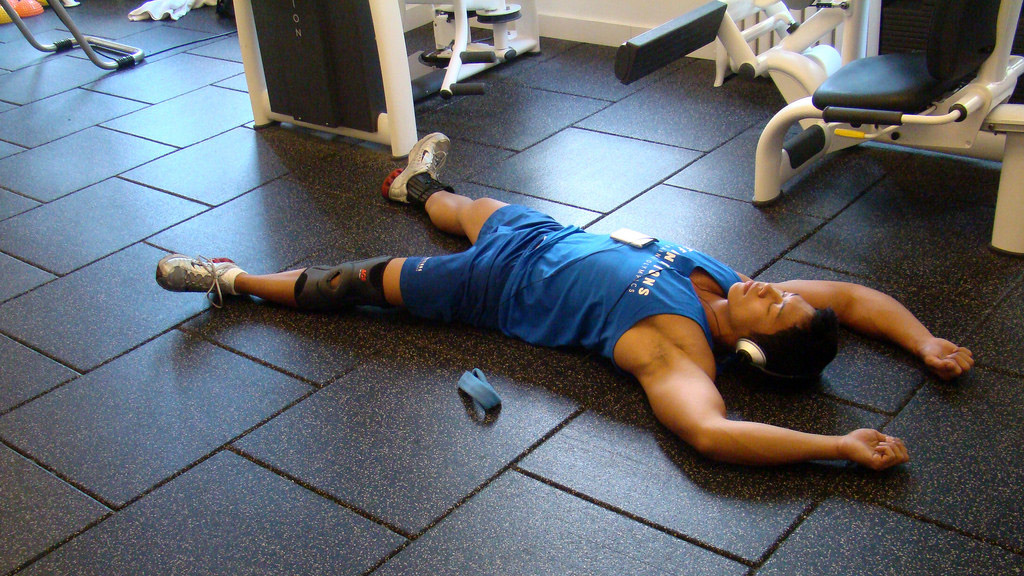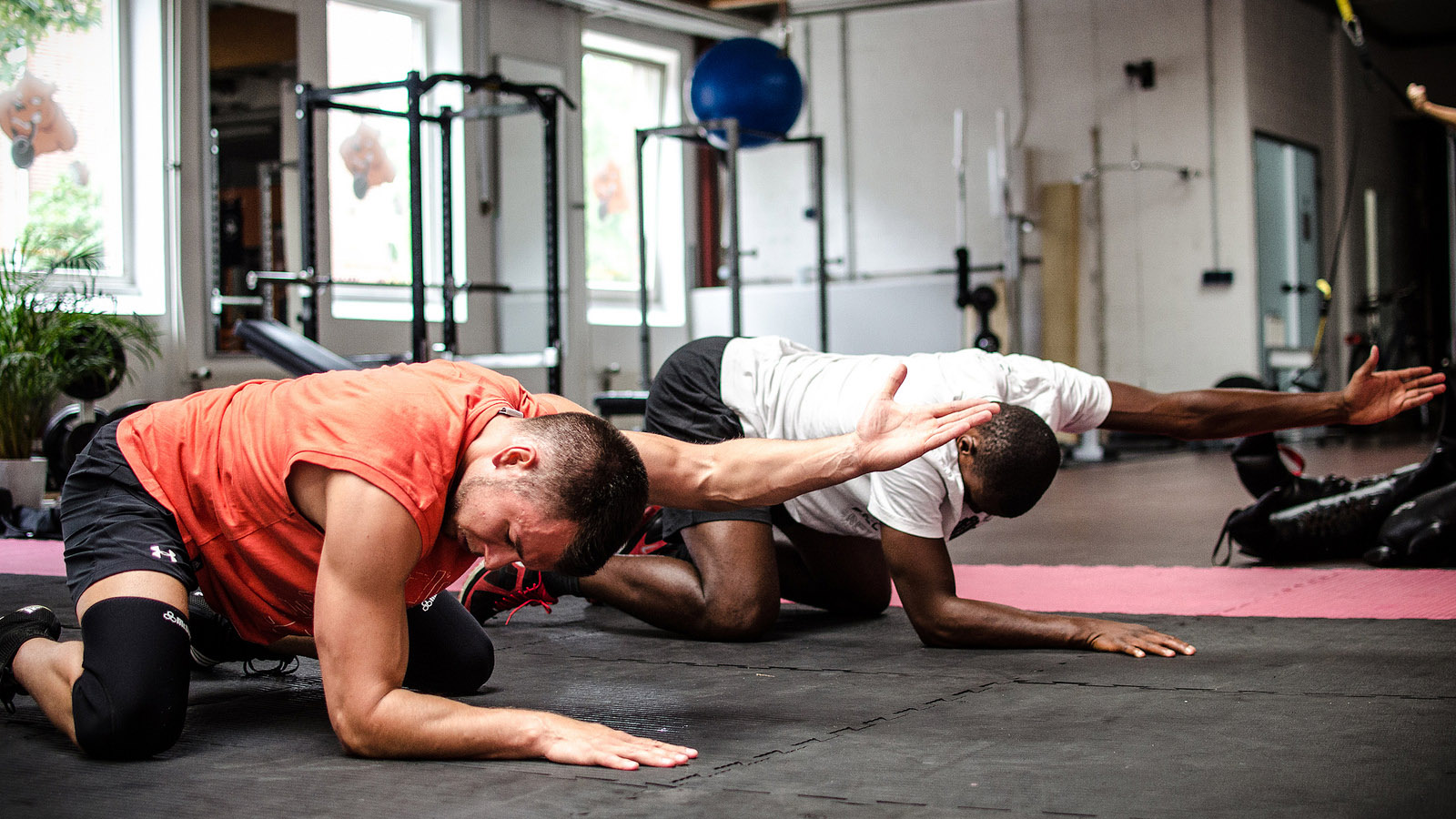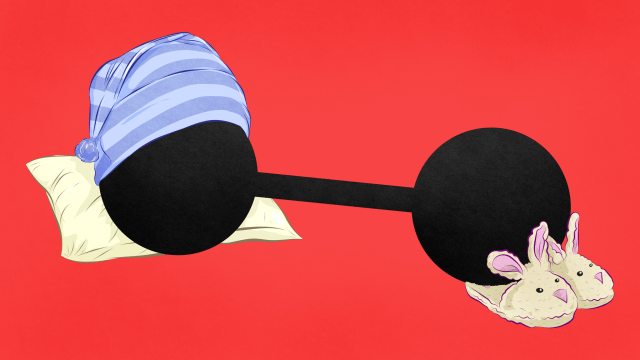Rest between sets and exercises has as large an impact on your fitness as the number of sets and reps do. If your breaks are too short, you rob yourself of their benefits, or worse, increase your risk for injury. If they’re too long, you’re not exercising hard enough. The sweet spot is based on why you work out, and the exercises you do.
Illustration by: Sam Woolley.
When you lift, your muscles burn through their limited fuel, and your body can only keep up producing more fuel to get you through less than 10 seconds of really hard effort, like doing a few reps of ultra-heavy deadlifts.
By taking a break — about 2.5 to three minutes to recover after a set of hard lifting — you give your muscles a chance to replenish their short-term supplies of fuel, which gives you more energy to push harder again. But not everyone needs to sit and twiddle their thumbs for that many minutes. What you want to accomplish with your training has a huge say in how long you should rest.
Longer Rest Between Sets Maximises Your Gains in Strength
If you’re trying to get as strong as possible, you’d typically be lifting heavy in the lower rep range, between one to five reps. As a result, you’re demanding a lot of your body (mainly your nervous system) and need to rest longer to recover.
According to the International Sports Science Association (ISSA), you should aim for a rest period of about two to three minutes, sometimes up to five, between each set. This rest period maximises your strength increases since you’ll be able to approach each subsequent set of exercises with close-to-the-same amount of intensity, and more importantly, good form.
A study in the Journal of Strength and Conditioning Research indicated that subjects who performed near-max bench presses and rested at minimum of two minutes in-between sets were able to maintain top performance — up to a certain point. Fatigue set in eventually (as expected), but the subjects with longer rest times were able to keep up strong lifts for more sets than those who rested only one minute. The researchers didn’t observe significant differences in performance between resting two, three and five minutes though.
To make sure you recover enough to prevent injury and go ham for another set with the same energy, rest at least two minutes between sets. If you’re doing a lot of low-rep sets (like more than four), increase your rest period to three or five minutes as needed. It’s important that when you rest you actually just, you know, rest and relax so that you can focus.
Shorter Rest Periods Are Ideal for Muscle Endurance

Image by istolethetv.
Meanwhile, if you’re focusing on growing bigger muscles or developing muscle endurance (increasing how long your muscles can exert a certain amount of force), you’ll train in the higher rep range, typically between eight to 15 reps per set. Pumping out more reps means that the set itself takes on a different form of stress for your body. More specifically, you’ll feel your “muscles burn”.
As this study review in Sports Medicine indicates, combining this sort of workout with a shortened rest time is associated with sending a stronger “We need to grow!” signal to your muscles. And as you train this way more, you get better at managing that “burn” and be able to work hard for longer.
So, if your goal is to put on muscle mass, you should take between 30-60 seconds of rest, according to ISSA. They further note:
Another way to look at this is to shoot for a work-rest ratio of 1:1. This means that you spend the same amount of time resting as it took you to complete the previous set. Athletes whose sport demands 1 to 3 minutes of all out effort with little or no rest may benefit from a work-rest ratio of 1:1 or slightly higher. This means that you spend the same or less time resting than you do performing each set of exercise.
In addition, muscular hypertrophy (growth in size) will be maximized using the 1:1 work-rest ratio in conjunction with high training volume and a weight load between your 8 and 12 repetition maximum.
Really short rest times that are between 20-30 seconds like in circuit training, high-intensity interval training or supersets are also often used to roll strength and cardio benefits into one. You shouldn’t expect to gain Hulk-like strength, but these intense workouts with shortened rest periods can improve your aerobic fitness and help you lose weight the same way a traditional long run can, if not better in some cases.
Choose the Right Amount of Rest For You and Your Workouts

Image by stoerchen.
If you’re just starting out, you should take more rest as needed. As your fitness and training improve, you can play around with your rest times as you need to. Here’s a neatly broken down, albeit slightly modified (by me) rest period reference guide from fitness blog A Workout Routine:
Rest Time Between Sets: 20-60 seconds
Most Ideal For: Muscular endurance, metabolic training/circuit training, burning some additional calories.
Rest Time Between Sets: 1-2 minutes
Most Ideal For: Building muscle, getting toned, looking good.
Rest Time Between Sets: 2-3 minutes
Most Ideal For: Building muscle, getting toned, looking good, increasing strength.
Rest Time Between Sets: 3-5 minutes
Most Ideal For: Strength and muscular power.
A Workout Routine notes that if you’re doing demanding, compound exercises, or exercises that use multiple big muscle groups, rest more towards the higher end range. If it’s a non-compound movement (like a bicep curl), you can use the rest times on the lower end range. Sometimes, though, it’s best to go by how you feel: If you’re feeling wiped, rest a bit more; conversely, if you’re buzzing with energy, cut your rest time.
So, what about the rest between completely different exercises? Simply rest as long as you did during the final set of the previous exercise. That means that if you rested for two minutes during your last set of squats, then you’d rest for two minutes before you start a new set of, say, lunges.
When you incorporate the appropriate rest times into your workouts, you should take them seriously. That means setting a timer or closely watching the clock to keep track. It also means forgoing long chats with people in-between sets. Not only do they make you lose track of time, you may also just draw ire from people who might be waiting for you to finish. Rest times are important, but don’t fret if you end up needing more time than our ranges here. You still benefit from just showing up and working out.

Comments